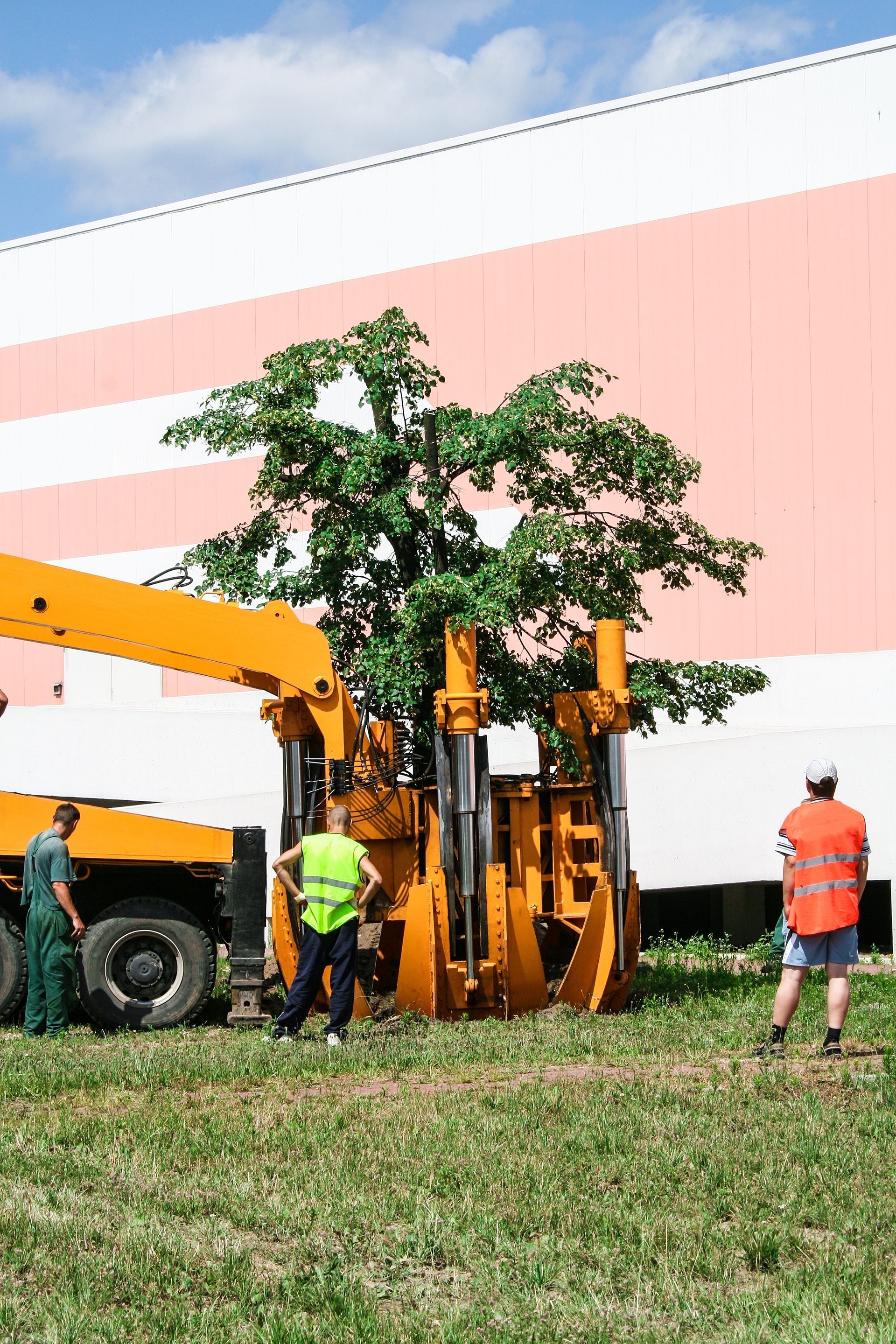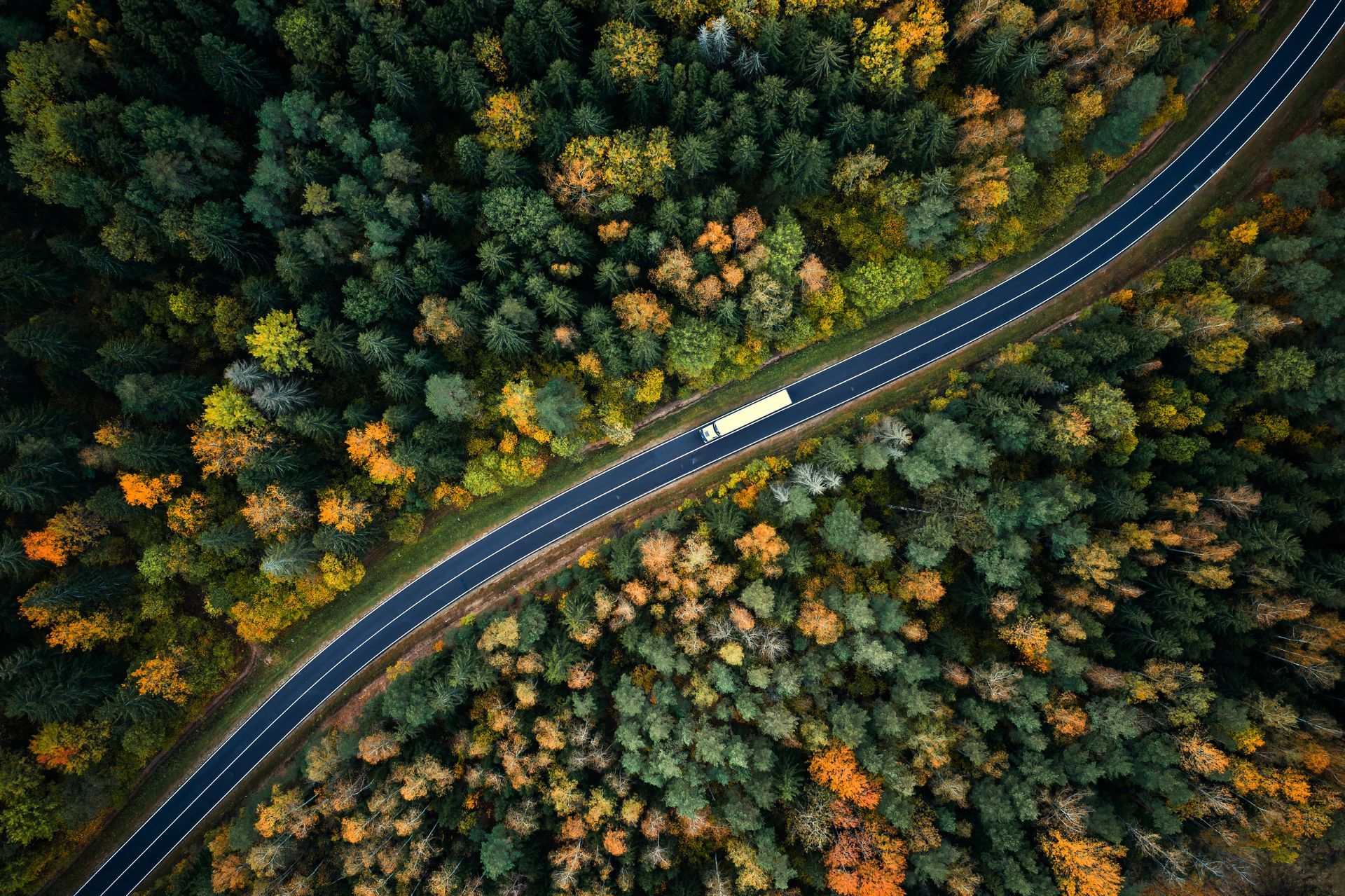How To Transplant Trees

Have you ever wondered how people move trees? Transplanting a tree is a complicated process that requires proper planning ahead. If you don't know what that means, you are about to learn.
Table of Contents
How To Move A Tree Without Killing It
You can't just transplant a tree and hope for the best. Transplanting requires proper planning to improve the odds the tree survives.
Why? In some cases, transplanting a tree can remove up to 90% of the tree's roots. If you don't plan ahead, you will kill the tree because you must do everything possible to ensure it can establish itself in the location.
Tree Transplanting
Getting The Tree Out of The Ground
To effectively transplant a tree without the use of a tree spade follow these steps:
- Make first cuts around the perimeter of the root ball. Be sure to use a sharp spade or shovel because you want to make clean cuts to avoid breaking roots.
- Sterilize any tools that will be used to cut roots using alcohol or bleach to minimize transfer of disease.
- If you come across larger roots, cut them with your best loppers or hand saw.
- While digging the trench, do your best not to stand on the root ball. You could break down the root ball and damage the root system.
- Once you've reached the desired depth, you can begin shaping the ball. It should taper on the sides, and slant inward toward the base. The root ball should stand on a pedestal of soil to be shaped and wrapped.
- Place the burlap on the sides of the ball, and across the top. Pull it snug. Use nails or ties to make sure it is tight agains the root system. The burlap should cover the full circumference of the root ball.
- Once the tree roots have been laced and secured, undercut the tree. Larger trees will need a crane or other mechanical device to lift it from its hole. Secure the root ball with slings or chains but do not lift the tree by it's trunk or you can damage the root ball.
- When the root ball is out of the ground, fasten the burlap to the bottom of the ball. Pad the tree trunk well to protect it from injury or damage on its way to the new site. Cover the crown of the tree to prevent it from drying out.
- Bring the tree to the new hole, the planting hole, and begin the process. Be sure to use the right tools for planting trees.
Root Pruning
Root pruning is the process of pre-digging around a root ball to increase the density of root development within the final root ball. When you dig around the root ball, you sever the existing tree roots but you stimulate root regeneration.
This is sometimes done a few times before you transplant the tree but every time you sever a few inches further out from the previous cut. When you root prune, it is not uncommon for the top of the tree to reduce as the tree will focus its efforts on stimulating the root system.
Tip: Root pruning severs existing roots to stimulate new root development which will be the future root ball of the transplanted tree.
Root Ball Size
When a tree is dug up for transplantation, the size of the root ball will be based on the size of the tree caliper. The width of the root ball will be based on the tree caliper, and the depth of the root ball will vary according to a few things:
- Species
- Soil texture
- Irrigation practices
- Age of the land
- Size of the land
Bigger trees need deeper root balls. This makes sure more of the tree's root ball is encompassed meaning the tree will have adequate regrowth, anchorage and stability. Smaller trees need less depth for the same reasons. When transplanting a tree, the name of the game is to keep the root ball intact.
Securing the Branches
Before the tree is moved, tied together the branches to stop them from breaking during transplant. Of course, don't over tighten as you risk damaging the bark, compressing tree tissue or breaking the branches.
For branches that seem dead or dying, cut them off with a good set of tree loppers. No point in bringing along any deadwood.

When To Use A Tree Spade
A tree spade is a mechanical machine used to transplant trees. It encircles a tree and digs its large blades down into the earth at an angle that forms a root ball.
The tree spade's blades will cut clean through the roots assuming they don't get caught. Any roots that get caught are severed after the machine lifts the tree hydraulically from the ground.
Sizes of Tree Spade
Tree spades come in different sizes. Be sure to get the proper tree spade for the job. You don't want to use a tree spade for a tree that surpasses the size of the spade.
The bigger the tree, the less likely it is to survive transplantation. This is because the root ball size must be proportionate to the size of the tree.
The better you can center the tree spade around the tree, the more uniform the machine will create the root ball. You want to maximize the amount of the root system captured to increase the odds the tree survives.
Transplanting Trees on Slopes
If you are transplanting a tree on a steep slope, the machine should be supported on the downward side of the slope.
Best Time To Move A Tree
Temperate Climates
In temperature climates, the best time to transplant most tree species is in early spring or autumn when the tree is dormant.
Moderate Climates
In moderate climates, many deciduous trees and shrubs can be moved just after the autumn leaves drop. This is when the moisture levels are still high in the soil, and it is also when the soil is still warm. You need to transplant at this time because it will give the tree a chance to establish prior to the ground freezing.
Other species are better transplanted in early Spring. Ideally, this is before budbreak. If you are transplanting dormant trees, you reduce demand on moisture in the soil because transpiration is minimal.
Colder Climates
In colder climates, huge trees are transplanted when the ground is frozen. Using heavy equipment around the tree will do less damage to the surrounding soil.
If the outer edges of the root ball are frozen, it will be easier to transplant without damage the root ball. Not only that but frozen trees need much less wrapping because they are much easier to handle.
If you move a tree in the dead of winter, you absolutely need to plan ahead. The tree should be pre-dug and mulched over before the ground freezes, and the hole at the new spot should be pre-dug before the ground freezes over.
Transplanting During the Growing Season
If you are careful and plan ahead, some trees can be transplanted during the growing season. If the tree comes from a nursery, it can be stored in a holding area and hardened off.
It wouldn't be uncommon for leaves to drop off the tree because of its reduced root system will have reduce water availability. If they are stored for long enough, new root generation could happen.
Sweet New Earth's Final Word
Thanks for stopping by! We hoped you enjoyed reading about transplanting trees. It's a difficult process with varying success rates. Remember, if you have never done it before, it is best to contact a professional.
FAQs

Christina Hernandez
Christina has done most of her research on environmental science but recently has changed her focus towards sustainable forestry. She has a passion for the outdoors and wants to spread that passion to the world.
Join our community!
Join to receive guides, insights, and the latest gardening deals!
